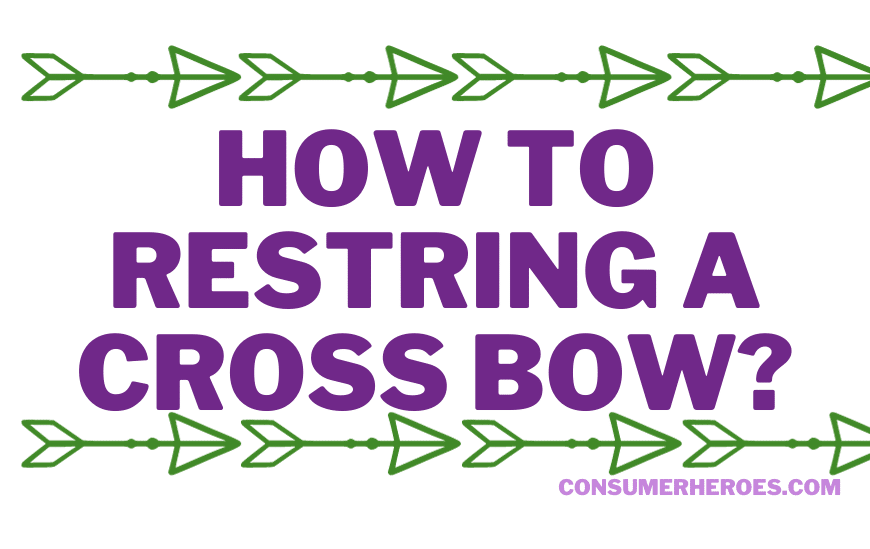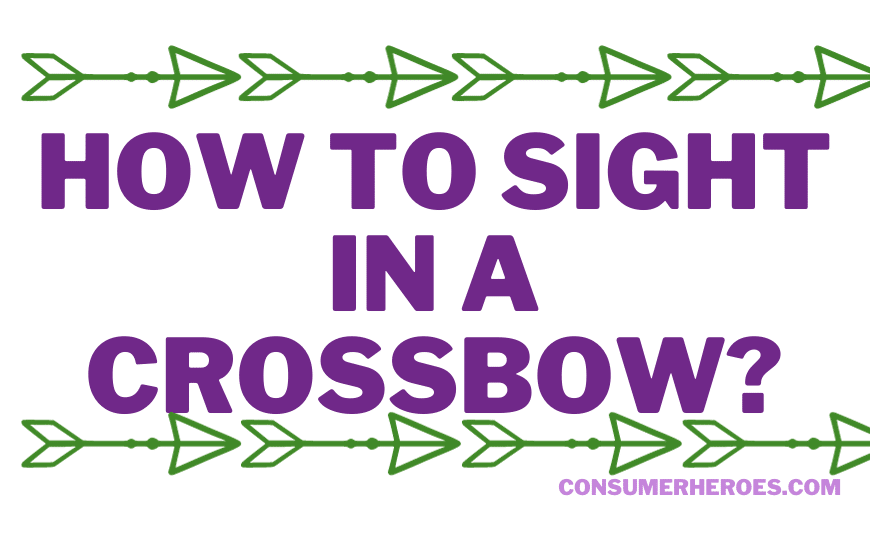Crossbows have been used for hunting and warfare for centuries. They are a type of bow that uses a horizontal limb assembly mounted on a stock to shoot bolts or quarrels. Crossbows are known for their accuracy and power, and can shoot at high speeds with great force. One question that often arises when it comes to crossbows is how far they can shoot.
The range of a crossbow depends on several factors, including the type of crossbow, the draw weight, the bolt weight, and the type of tip used on the bolt. Generally, a modern crossbow can shoot accurately up to 60-80 yards, with some models capable of shooting even farther. However, the effective range of a crossbow is typically considered to be around 40 yards, as accuracy and power can decrease significantly beyond that distance. It is important to note that the distance a crossbow can shoot also depends on the skill level of the shooter and the conditions in which they are shooting.
Crossbow Basics
Crossbows are a type of weapon that shoots arrows, bolts, or quarrels. They are similar to a bow, but they have a horizontal limb assembly mounted on a stock. Crossbows can be used for hunting, target shooting, and even warfare.
When it comes to the range of a crossbow, it depends on several factors. The type of crossbow, the draw weight, the arrow or bolt used, and the skill of the shooter all play a role in determining how far a crossbow can shoot.
A typical hunting crossbow can shoot an arrow or bolt up to 50-80 yards accurately. However, some high-end crossbows can shoot up to 100 yards or more with accuracy. It’s important to note that shooting at longer distances requires more skill and practice.
The draw weight of a crossbow is also an important factor. The higher the draw weight, the more energy is stored in the limbs, which translates into a faster and more powerful shot. A crossbow with a draw weight of 150 pounds or more can shoot an arrow or bolt at speeds of up to 400 feet per second (fps).
In addition to draw weight, the type of arrow or bolt used can also affect the range of a crossbow. A heavier arrow or bolt will have more momentum and can travel farther, but it will also be slower. On the other hand, a lighter arrow or bolt will be faster but will not travel as far.
Overall, it’s important to choose a crossbow that suits your needs and skill level. With practice and proper technique, a crossbow can be an effective and accurate weapon for hunting and target shooting.
Types of Crossbows
Recurve Crossbows
Recurve crossbows are the most traditional type of crossbow. They are named for their recurve limbs, which curve away from the shooter when the bow is unstrung. This design allows for a longer draw length and more power in the shot. Recurve crossbows are known for their simplicity and durability. They are also quieter than other types of crossbows. However, they may not be as accurate as other types.
Compound Crossbows
Compound crossbows are a more modern type of crossbow. They feature a system of pulleys and cables that allow for a shorter draw length but more power in the shot. This design also allows for a more consistent shot and greater accuracy. Compound crossbows are often used for hunting. They can be more expensive than other types of crossbows and may require more maintenance.
Pistol Crossbows
Pistol crossbows are smaller and more compact than other types of crossbows. They are often used for target shooting and small game hunting. Pistol crossbows are easy to handle and can be fired with one hand. They are also less powerful than other types of crossbows and have a shorter range.
Rifle Crossbows
Rifle crossbows are the most powerful type of crossbow. They are designed to look and feel like a rifle, with a stock and trigger mechanism. Rifle crossbows are often used for big game hunting and long-range shooting. They can be very accurate and have a longer range than other types of crossbows. However, they can be heavy and difficult to handle.
Overall, the type of crossbow that is best for a person depends on their individual needs and preferences. Recurve crossbows are a good option for those who value simplicity and durability, while compound crossbows are better for those who want a more accurate shot. Pistol crossbows are great for target shooting and small game hunting, while rifle crossbows are ideal for big game hunting and long-range shooting.
Factors Influencing Crossbow Range
Bolt Weight
The weight of the bolt, or arrow, is a significant factor in determining the range of a crossbow. The heavier the bolt, the shorter the range. This is because a heavier bolt requires more force to propel it forward, and the crossbow’s energy is dispersed over a shorter distance. On the other hand, a lighter bolt can travel farther, as it requires less energy to reach a high velocity.
Draw Weight
The draw weight of a crossbow is the amount of force required to cock the bowstring back. The higher the draw weight, the more force is behind the bolt when it is released, resulting in a longer range. It is important to note that higher draw weights can be more challenging to handle, especially for beginners.
Crossbow Speed
The speed of a crossbow is determined by the combination of its draw weight, bolt weight, and other factors. A faster crossbow will generally have a longer range than a slower one, as the bolt spends less time in flight and is affected less by external factors such as wind resistance.
Overall, there are several factors that can influence the range of a crossbow, including bolt weight, draw weight, and crossbow speed. By understanding these factors, hunters and archers can make informed decisions when selecting equipment and adjusting their technique to achieve the best possible results.
Range of Different Crossbows
Range of Recurve Crossbows
Recurve crossbows are known for their simplicity and ease of use. They have a shorter range compared to other crossbow types, but are still powerful enough for hunting and target shooting. The range of a recurve crossbow can vary depending on the draw weight, arrow weight, and other factors.
On average, a recurve crossbow can shoot an arrow up to 50 yards accurately. However, some models can shoot up to 80 yards with high accuracy. It is important to note that shooting at a longer range requires more skill and experience to ensure accuracy.
Range of Compound Crossbows
Compound crossbows are known for their power and accuracy. They use a system of pulleys and cables that make them easier to draw and shoot than recurve crossbows. The range of a compound crossbow can vary depending on the draw weight, arrow weight, and other factors.
On average, a compound crossbow can shoot an arrow up to 80 yards accurately. However, some models can shoot up to 100 yards with high accuracy. It is important to note that shooting at a longer range requires more skill and experience to ensure accuracy.
Range of Pistol Crossbows
Pistol crossbows are small and compact, making them easy to carry and use. They are not as powerful as other crossbow types, but are still great for target shooting and small game hunting. The range of a pistol crossbow can vary depending on the draw weight, arrow weight, and other factors.
On average, a pistol crossbow can shoot an arrow up to 30 yards accurately. However, some models can shoot up to 50 yards with high accuracy. It is important to note that shooting at a longer range requires more skill and experience to ensure accuracy.
Range of Rifle Crossbows
Rifle crossbows are the most powerful type of crossbow. They are designed to shoot arrows at high speeds over long distances. The range of a rifle crossbow can vary depending on the draw weight, arrow weight, and other factors.
On average, a rifle crossbow can shoot an arrow up to 150 yards accurately. However, some models can shoot up to 200 yards with high accuracy. It is important to note that shooting at a longer range requires more skill and experience to ensure accuracy.
Safety Considerations When Shooting a Crossbow
When shooting a crossbow, safety should always be the top priority. Crossbows are powerful weapons that can cause serious injury or death if not handled properly. Here are some safety considerations to keep in mind when shooting a crossbow:
Wear Proper Safety Gear
Always wear proper safety gear when shooting a crossbow. This includes eye protection, ear protection, and a protective vest or jacket. Additionally, wear gloves to protect your hands from the bowstring.
Check Your Crossbow Before Shooting
Before shooting your crossbow, make sure it is in good working condition. Check the string, limbs, and bolts for any signs of damage or wear. Make sure the bow is properly strung and the bolts are securely in place.
Use a Safe Backstop
When shooting a crossbow, always use a safe backstop. This can be a target made of foam or other suitable material, or a natural backstop such as a hill or embankment. Make sure the backstop is large enough to stop the bolt and any debris that may be created upon impact.
Never Dry Fire a Crossbow
Never dry fire a crossbow. Dry firing is when you shoot the bow without a bolt in place. This can cause serious damage to the bow and may result in injury to the shooter or bystanders.
Be Aware of Your Surroundings
When shooting a crossbow, always be aware of your surroundings. Make sure there are no people or animals in the area that could be hit by the bolt. Additionally, make sure you have enough space to safely shoot the bow without hitting any objects or structures.
By following these safety considerations when shooting a crossbow, you can help prevent accidents and ensure a safe and enjoyable shooting experience.
Conclusion
In conclusion, the distance a crossbow can shoot depends on various factors such as the type of crossbow, draw weight, arrow weight, and arrow speed. The maximum effective range of a crossbow can vary from 20 yards to 100 yards or more.
It is important to note that while some crossbows may have a longer range, it does not necessarily mean they are more accurate or effective at longer distances. The accuracy and effectiveness of a crossbow depend on the skill level of the shooter, the quality of the crossbow, and the conditions in which it is being used.
When selecting a crossbow, it is essential to consider the intended use and the shooter’s skill level. A beginner may want to start with a lower draw weight and a shorter range, while a more experienced shooter may prefer a higher draw weight and a longer range.
Overall, crossbows are powerful and versatile weapons that can be used for hunting, target shooting, and even self-defense. With proper maintenance and use, a crossbow can provide years of enjoyment and reliable performance.







